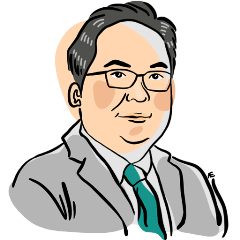 A data scientist’s calculations help steer the healthcare system through the pandemic.
A data scientist’s calculations help steer the healthcare system through the pandemic.
“New numbers need to come into play,” says Sean Lam, a then-assistant professor with Duke-NUS who also heads the data science team at the SingHealth Duke-NUS Academic Medical Centre, about the outlook on the pandemic as Singapore ramped up its vaccination programme.
As of 23 June, five million doses of the SARS-CoV-2 vaccine had been administered to residents in Singapore, and in an effort to increase the roll-out rate, the government had announced an accelerated vaccination programme that would come into effect on 26 June.
“We would have to watch the evolution carefully,” he recalls. “What the impact on morbidity and mortality would be as well as the easing of some of the restrictions.”
Lam would know. Having spent more than a decade modelling the day-to-day operations across Singapore’s largest healthcare cluster, SingHealth, and developing predictive algorithms for clinical and management use, Lam and his team of data scientists and analysts were quick to respond when SARS-CoV-2 reached Singapore.
They adjusted their models and fine-tuned them with the rapidly emerging and evolving information on the virus; models that would help hospital executives and operations managers plan where to focus resources so that the health system could weather the surge in patients.
“We were first asked to model how a surge in patients would affect the hospitals and the overall patient load,” remembers Lam.
This model made the best use of the scattered data from published sources on hand at that time—Big Data, after all, had to start smaller somewhere.
“We developed a model and shared that with the Ministry of Health,” recalls Lam about that early modelling. “They took some of those recommendations.”
With some additional resources from the Ministry, Lam as part of the Health Services and Systems Research (HSSR) team at Duke-NUS put forward a comprehensive multi-pronged modelling approach called COVID-19 Virtual Disease Health System Outbreak Model for Singapore, aptly abbreviated to CoViD-SOS.
Defining the trees to see the forest
By April, they were working flat out on the projects, which for Lam meant supporting healthcare operations teams at SingHealth in their resource planning through dynamic modelling that could forecast different scenarios accurately even as the data evolved.
“We had a systems dynamics model,” says Lam. “It could consider more complex interactions, the feedback-effects, loops, etc, leading to the ability to uncover emergent behaviours and unforeseen consequences. We also brought in a variety of other considerations such as public health interventions, workflow modifications and even social behaviours.”
“We built our simulation models at the micro and meso levels to get the most accurate estimates for a variety of problem statements,” he adds.
As policy and treatment courses changed over the coming months, Lam’s models, too, evolved.
“There were policy changes like the introduction of step-down facilities and community care facilities. Those, as well as new policies implemented at the hospital level, would all affect our predictions.”
Throughout the pandemic, he continued to share his insights at the SingHealth Disease Outbreak Committee as well as other hospital-level operational committees, some of which he and his team published in journals including Frontiers in Public Health and the International Journal of Medical Informatics.
Big Data analysis captures the widening ripples triggered by the pandemic
But it wasn’t just the direct effects of COVID-19 on hospitals that concerned Lam.
He also studied the impact of delayed and cancelled routine surgeries, and the impact on patients who faced delayed care or were unable to visit the hospital. And how the hospital could plan for resumption of business as usual.
“How could we plan to best manage the backlog of surgeries but ensure that we would have enough beds, operating theatre capacity, diagnostic facilities and the necessary healthcare manpower,” explains Lam. Those models helped the Singapore General Hospital resume its operations and effectively tackle the backlog that had been caused by the delays imposed by the pandemic.
Reflecting on the most intense period of the pandemic, Lam finds satisfaction from his behind-the-scenes perspective; knowing the what-ifs that were avoided. When COVID-19 cases were high, Lam’s models painted a grim picture. Without any intervention, he saw towering peaks almost shooting off the charts. In the end, events unfolded differently.
“It was good to see that the interventions were effective and that we avoided the worst-case scenarios completely,” says Lam.
It also felt good to return to the projects that had to be set aside to free time for COVID-19 projects. These projects included ongoing studies of how to optimise healthcare resources for pandemics or disaster management.
“Some of the other research activities are related to respiratory medicine, cancer screening and diagnosis, diabetes and chronic diseases. The team has also been deep in the trenches working to implement the next-generation data science platform for SingHealth,” he says.
Peacetime practice powers pandemic performance
Pandemic-era research on SARS-CoV-2 had a noticeable and immediate impact. It was driven by an existential urgency — the virus spread rapidly, impelled lockdowns, overwhelmed unprepared health systems and caused mass deaths.
Yet, Lam approached — and continues to approach — these social and institutional anxieties unfazed. After all, there’s no better time to prepare for war than during peacetime.
“If you’ve not been doing this data modelling, and suddenly you’re called to do something like it — it’s like starting in a whole new research field. During the middle of a pandemic. You’d better not take it up,” he says.
“But here, we’ve been doing this all along, we’ve been doing this,” Lam emphasises. “So, whenever we’re called up to do this, we are always ready to take up the challenge.”